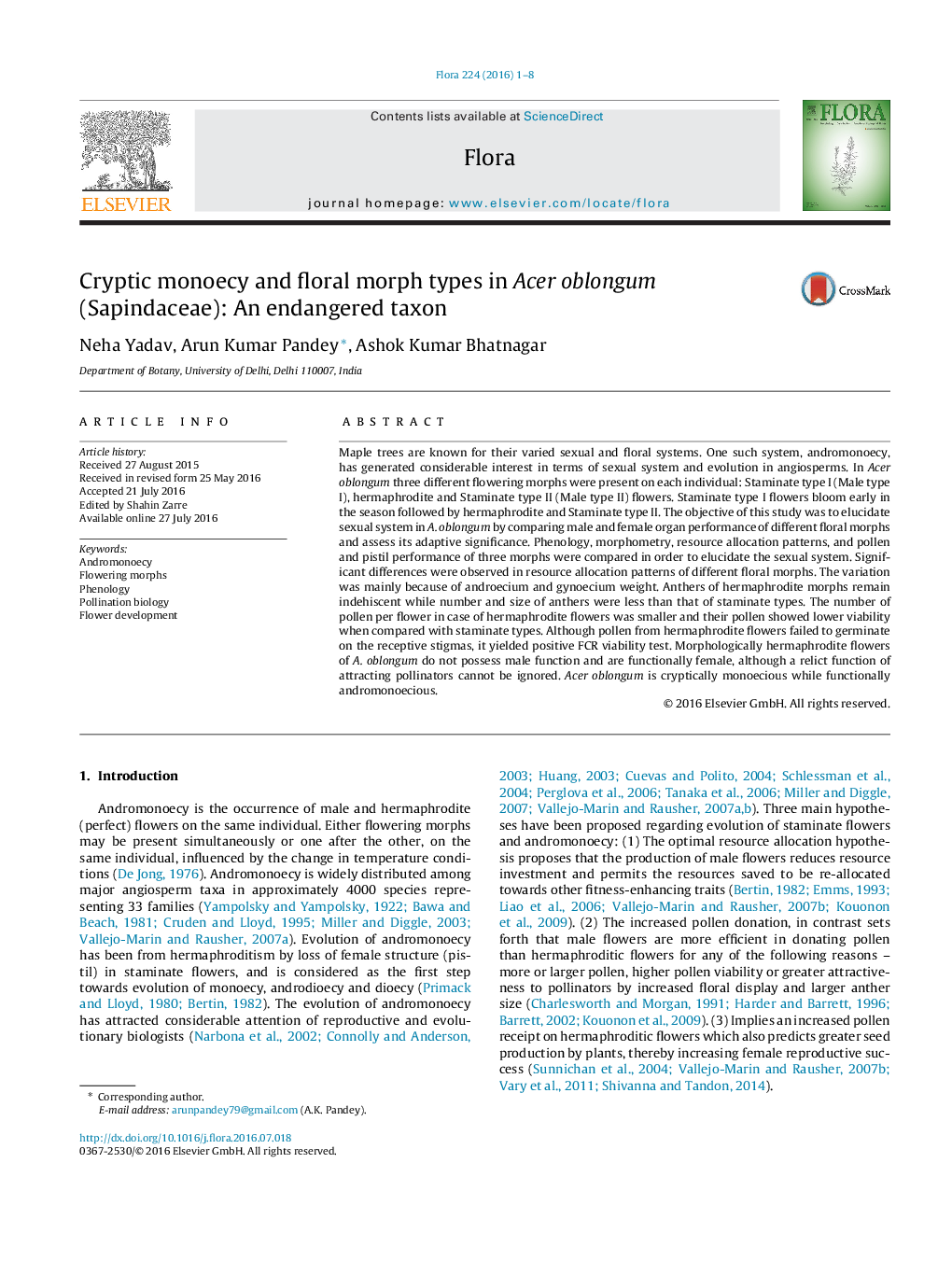| Article ID | Journal | Published Year | Pages | File Type |
|---|---|---|---|---|
| 2179312 | Flora - Morphology, Distribution, Functional Ecology of Plants | 2016 | 8 Pages |
•Acer oblongum is andromonoecious and exhibits cryptic monoecy.•It possesses three types of floral morph: Staminate type I, Hermaphrodite type and Staminate type II flowers on same individuals.•Early blooming Staminate type I flowers may serve to attract and sustain bees.•Hermaphrodite flowers do not possess male function because the anthers are indehiscent.•Staminate type II flowers are involved in pollination and fertilization events.
Maple trees are known for their varied sexual and floral systems. One such system, andromonoecy, has generated considerable interest in terms of sexual system and evolution in angiosperms. In Acer oblongum three different flowering morphs were present on each individual: Staminate type I (Male type I), hermaphrodite and Staminate type II (Male type II) flowers. Staminate type I flowers bloom early in the season followed by hermaphrodite and Staminate type II. The objective of this study was to elucidate sexual system in A. oblongum by comparing male and female organ performance of different floral morphs and assess its adaptive significance. Phenology, morphometry, resource allocation patterns, and pollen and pistil performance of three morphs were compared in order to elucidate the sexual system. Significant differences were observed in resource allocation patterns of different floral morphs. The variation was mainly because of androecium and gynoecium weight. Anthers of hermaphrodite morphs remain indehiscent while number and size of anthers were less than that of staminate types. The number of pollen per flower in case of hermaphrodite flowers was smaller and their pollen showed lower viability when compared with staminate types. Although pollen from hermaphrodite flowers failed to germinate on the receptive stigmas, it yielded positive FCR viability test. Morphologically hermaphrodite flowers of A. oblongum do not possess male function and are functionally female, although a relict function of attracting pollinators cannot be ignored. Acer oblongum is cryptically monoecious while functionally andromonoecious.
